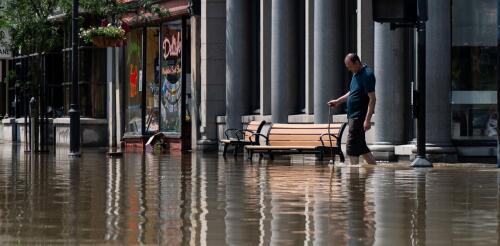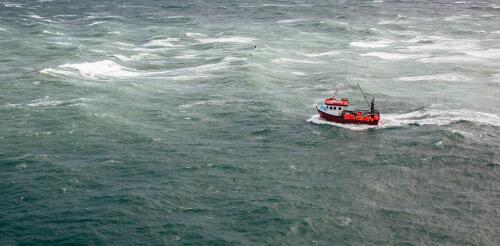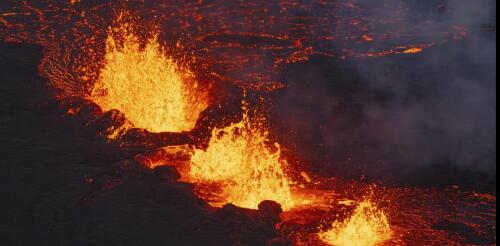environment
Wet snow pelts my face and pulls against my skis as I climb above 8,000 feet in the Sierra Nevada of eastern California, tugging a sled loaded with batteries, bolts, wire and 40 pounds of sunflower seeds critical to our mountain chickadee research. As we reach the remote research site, I duck under a tarp and open a laptop. A chorus of identification numbers are shouted back and forth as fellow behavioral ecologist Vladimir Pravosudov and I program “smart” bird feeders for an upcoming experiment. I have spent the past six years monitoring a population of mountain chickadees here, tracking their life cycles and, importantly, their memory, working in a system Pravosudov established in 2013. The long, consistent record from this research site has allowed us to observe how chickadees survive in extreme winter snowfall and to identify ecological patterns and changes. Snow piles up on the experiment’s bird feeders. Each chic...
National weather analysts released their 2023 billion-dollar disasters list on Jan. 9, just as 2024 was getting off to a ferocious start. A blizzard was sweeping across across the Plains and Midwest, and the South and East faced flood risks from extreme downpours. The U.S. set an unwelcome record for weather and climate disasters in 2023, with 28 disasters that exceeded more than US$1 billion in damage each. While it wasn’t the most expensive year overall – the costliest years included multiple hurricane strikes – it had the highest number of billion-dollar storms, floods, droughts and fires of any year since counting began in 1980, with six more than any other year, accounting for inflation. 2023’s billion-dollar disasters. Click the image to expand. NOAA The year’s most expensive disaster started with an unprecedented heat wave that sat over Texas for weeks over...
Coast redwoods – enormous, spectacular trees, some reaching nearly 400 feet, the tallest plants on the planet – thrive mostly in a narrow strip of land in the Pacific Northwest of the United States. Most of them grow from southern Oregon down into northern California, snugged up against the rugged Pacific coast. They have grown by slowly responding to moisture and rich alluvial soil over millennia, combined with a genetic payload that pushes them to the upper limits of tree height. They are at risk – down to perhaps 70,000 individuals, falling from at least a half-million trees before humans arrived – but that’s not a new story, for we are all at risk. Redwoods, like all trees, are engineered marvels. People don’t tend to think of natural things as “structures,” leaving that term to stand in for buildings, bridges and dams. But although trees were not built by humans, they didn’t just happen. They have come into their own t...
Humans are racing to harness the ocean’s vast potential to power global economic growth. Worldwide, ocean-based industries such as fishing, shipping and energy production generate at least US$1.5 trillion in economic activity each year and support 31 million jobs. This value has been increasing exponentially over the past 50 years and is expected to double by 2030. Transparency in monitoring this “blue acceleration” is crucial to prevent environmental degradation, overexploitation of fisheries and marine resources, and lawless behavior such as illegal fishing and human trafficking. Open information also will make countries better able to manage vital ocean resources effectively. But the sheer size of the ocean has made tracking industrial activities at a broad scale impractical – until now. A newly published study in the journal Nature combines satellite images, vessel GPS data and artificial intelligence to reveal human industrial activities across the...
Lava erupted through a fissure in Iceland’s Reykjanes Peninsula on Dec. 18, 2023, shooting almost 100 feet (30 meters) in the air in its early hours. Icelanders had been anticipating an eruption in the area for weeks, ever since a swarm of thousands of small earthquakes began on Oct. 23 northeast of the fishing town of Grindavík, signaling volcanic activity below. In the days that followed those first rumblings, a series of small rifts opened under the town, breaking streets, rupturing utility lines and tilting houses. GPS stations detected the ground sinking and rising over a large area. Geologists from the Icelandic Met Office interpreted the events as evidence that a basalt dike – pressurized magma that forces its way into a fracture – had intruded under Grindavík. The activity there had tapered off by early December, but 2.5 miles (4 kilometers) north of town, the ground under the Svartsengi geothermal power plant was moving....




